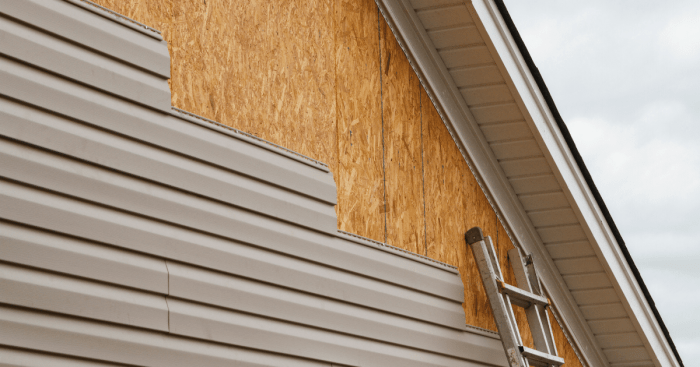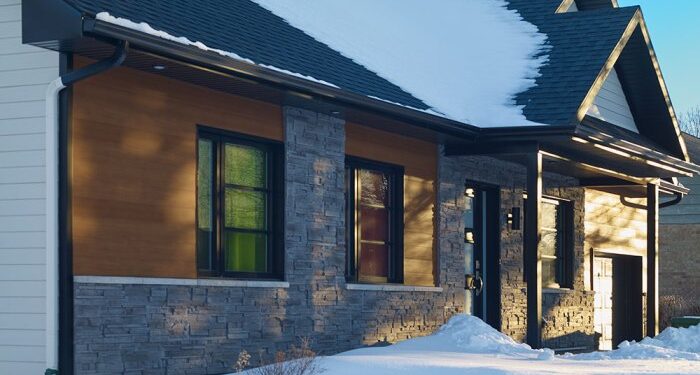Exploring the best siding materials for homes in cold climates, this introduction sets the stage for an informative and engaging discussion. From types of materials to insulation properties and durability, this guide covers everything you need to know.
As we delve deeper into the world of siding materials, we will uncover the key factors that make certain materials stand out in cold climate regions.
Types of Siding Materials
When choosing siding materials for homes in cold climates, it's essential to consider factors like insulation, durability, and cost-effectiveness. Here are some common siding materials suitable for cold weather regions:
Vinyl Siding
Vinyl siding is a popular choice due to its affordability and low maintenance. While it may not offer the best insulation compared to other materials, it is durable and resistant to harsh weather conditions. Vinyl siding is cost-effective and comes in a variety of colors and styles.
Fiber Cement Siding
Fiber cement siding is known for its durability and resistance to fire, moisture, and pests. It provides excellent insulation, making it a suitable choice for cold climates. Although it may be more expensive upfront, fiber cement siding is a long-lasting option that requires minimal maintenance.
Wood Siding
Wood siding provides natural insulation and a classic, rustic look to homes. While wood siding offers good insulation properties, it can be prone to rot, pests, and weather damage if not properly maintained. The cost of wood siding can vary depending on the type of wood used.
Engineered Wood Siding
Engineered wood siding is a more affordable alternative to natural wood siding. It offers similar insulation properties and aesthetics but is engineered to be more durable and resistant to pests and rot. Engineered wood siding is a cost-effective option for homeowners looking for the warmth of wood without the high maintenance.
Metal Siding
Metal siding, such as steel or aluminum, is known for its durability and low maintenance requirements. While metal siding may not provide the best insulation, it is resistant to pests, fire, and rot. Metal siding is a cost-effective option for homeowners looking for a modern and sleek appearance.
Insulation Properties

Insulation plays a crucial role in maintaining a comfortable temperature inside homes located in cold climates. Proper insulation helps in reducing heat loss, lowering energy bills, and enhancing overall energy efficiency.
Fiber Cement Siding
Fiber cement siding is known for its excellent insulation properties. The combination of cement, sand, and cellulose fibers provides a high level of thermal resistance, keeping the interior of the home warm during cold weather. Additionally, fiber cement siding is resistant to moisture, mold, and pests, contributing to a durable and well-insulated exterior.
Vinyl Siding
Vinyl siding is another popular choice for its insulation capabilities. With the addition of insulated backing, vinyl siding can enhance the thermal performance of a home by reducing heat transfer through the walls. This helps in maintaining a consistent indoor temperature and reducing the workload on heating systems during colder months.
Wood Siding
Wood siding, especially options like cedar or redwood, provide natural insulation properties. Wood has a cellular structure that traps air pockets, creating a barrier against heat loss. This natural insulation helps in regulating indoor temperature and reducing energy consumption for heating in cold climates.
Durability and Resistance
Durability is a crucial factor to consider when choosing siding for homes in cold climates. The extreme weather conditions, such as freezing temperatures, snow, and ice, can take a toll on the exterior of a house. Therefore, opting for a durable siding material is essential to ensure the longevity and protection of your home.When comparing the resistance of various siding materials to harsh cold weather conditions, some materials stand out for their ability to withstand the challenges.
For example, fiber cement siding is known for its durability and resistance to moisture, rot, and pests, making it an excellent choice for cold climates. Vinyl siding is another popular option that offers good resistance to extreme temperatures and is low maintenance.The durability of siding materials directly impacts the longevity of the siding in cold climate regions.
Materials like wood siding may require more maintenance and upkeep to prevent issues like rotting or warping in freezing temperatures. On the other hand, steel or aluminum siding is highly durable and can last for decades with minimal maintenance, making them ideal choices for cold climates where durability is essential.
Maintenance Requirements
When it comes to siding materials for homes in cold climates, understanding the maintenance requirements is crucial for keeping your home protected and looking its best. The impact of cold weather on siding maintenance can vary depending on the material used, so it's important to be aware of the specific needs of each type of siding.
Here, we will discuss the maintenance needs of different siding materials in cold climates and provide tips on how to effectively maintain siding in these areas.
Impact of Cold Weather on Maintenance
Cold weather can have a significant impact on the maintenance of siding materials, especially in areas with harsh winters. Freezing temperatures, snow, ice, and moisture can cause damage to siding over time, leading to issues such as warping, cracking, or mold growth.
It's important to regularly inspect your siding for any signs of damage and address them promptly to prevent further deterioration.
Tips for Effective Maintenance in Cold Climates
- Regularly clean your siding to remove dirt, debris, and mold buildup. Use a gentle cleanser and a soft brush to avoid damaging the material.
- Inspect your siding for any cracks, gaps, or signs of wear and tear. Seal any gaps or cracks to prevent moisture from seeping in and causing damage.
- Trim any trees or shrubs near your home to prevent branches from rubbing against the siding and causing scratches or damage.
- Consider applying a protective coating or sealant to your siding to provide an extra layer of protection against the elements.
- Regularly check for signs of mold or mildew growth and address any issues promptly to prevent them from spreading.
Final Wrap-Up
In conclusion, choosing the right siding material for cold climates is crucial for the comfort and longevity of your home. By understanding the insulation, durability, and maintenance needs of each material, you can make an informed decision that will benefit you in the long run.
FAQs
What are the best siding materials for cold climates?
The best siding materials for cold climates are typically vinyl, fiber cement, and engineered wood due to their durability and insulation properties.
How does cold weather affect siding maintenance?
Cold weather can cause certain siding materials to contract, leading to potential cracks or damage. It's important to regularly inspect and maintain your siding to prevent any issues.
Which siding material is the most cost-effective for cold climate regions?
Vinyl siding is often considered the most cost-effective option for cold climates, offering a good balance between affordability and durability.




